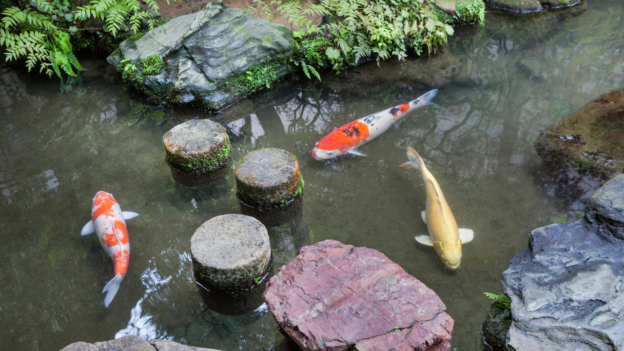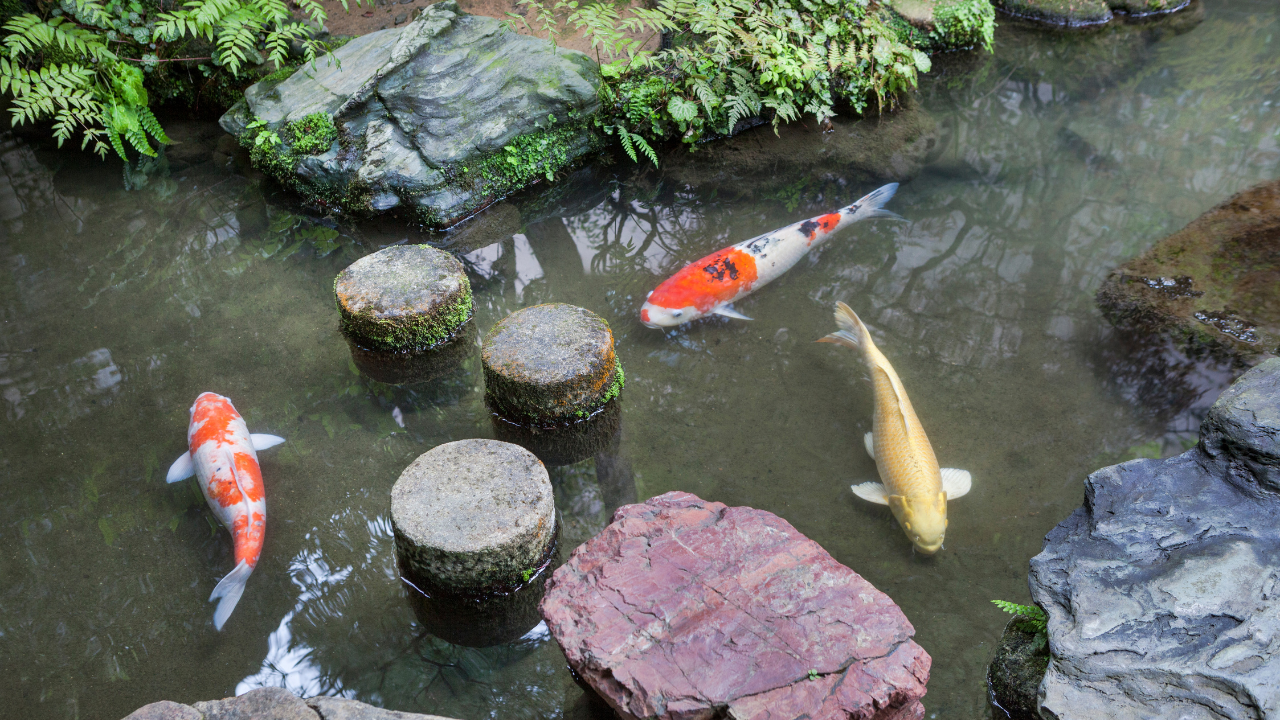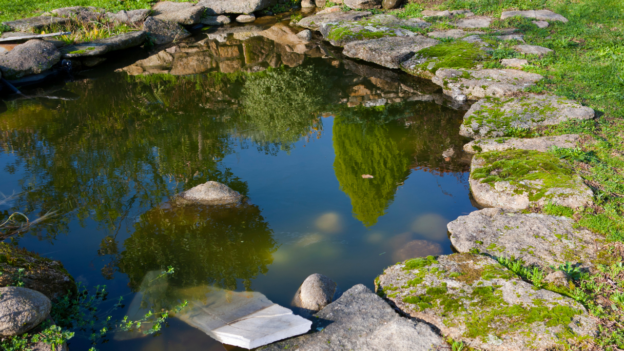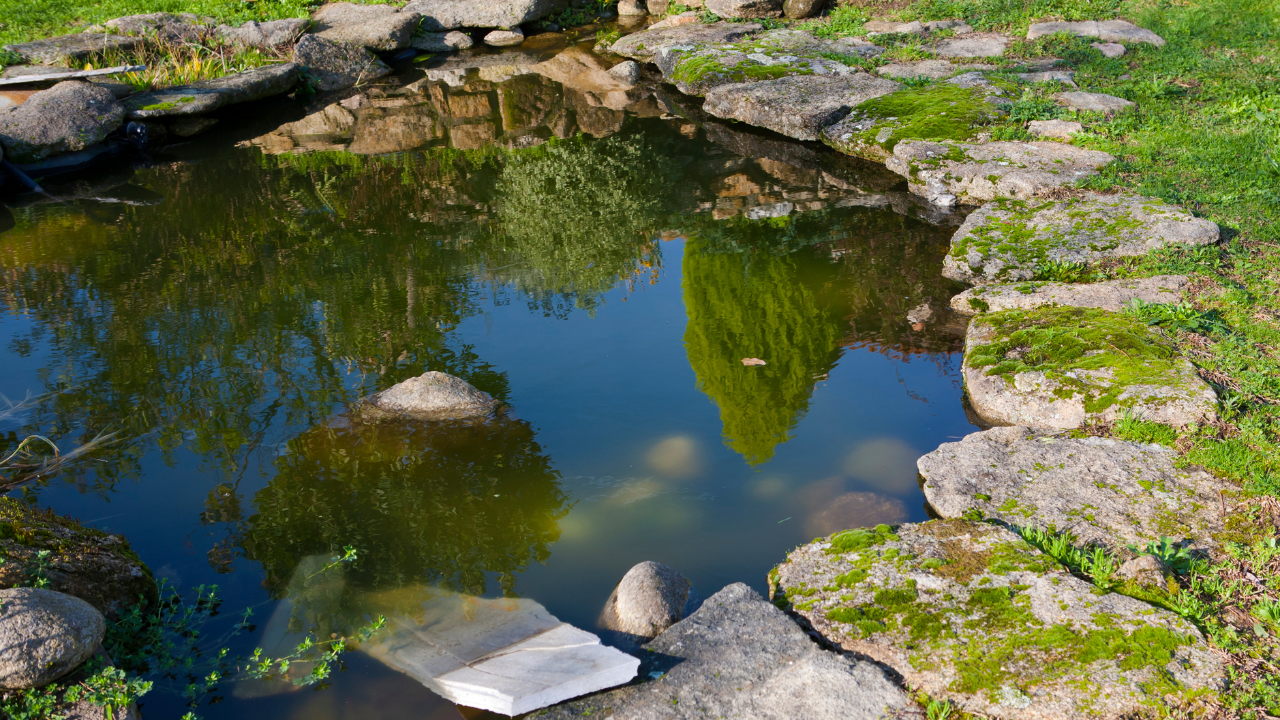Key Takeaways:
- Identify the Cause: Determine if excess nutrients, sunlight, poor filtration, or stagnant water are causing the problem.
- Use a UV Clarifier: Kill algae and improve water clarity.
- Add Beneficial Bacteria: Reduce nutrient levels and prevent algae growth.
- Improve Water Circulation: Increase water movement to prevent stagnation.
- Prevent Future Blooms: Regularly maintain your pond and monitor water quality.
Pond water should be clear and inviting, enhancing the beauty of your outdoor space. But when the water turns green, it can quickly become a source of frustration. Green pond water is typically caused by algae blooms, and while it’s a common issue, there are effective solutions to get your pond back to its pristine condition.
Common solutions to fix green pond water include:
- Installing a UV clarifier
- Adding beneficial bacteria
- Improving water circulation
- Reducing nutrient levels
If you’re facing this problem, don’t worry! In this article, we’ll explain why your pond water turns green and provide quick, actionable solutions to fix it.
Why Does Pond Water Turn Green?
Green pond water is primarily due to algae growth. Algae are microscopic plants that thrive in water, especially when the conditions are just right. A combination of sunlight, warm temperatures, and excess nutrients provides a perfect breeding ground for algae to flourish.
Here are some common reasons why your pond might turn green:
- Excess Nutrients: Too many nutrients in the water, particularly nitrogen and phosphorus, can cause an algae explosion.
- Direct Sunlight: Ponds that receive constant sunlight are more prone to algae growth.
- Lack of Filtration: Poor or inadequate filtration allows algae to thrive unchecked.
- Stagnant Water: Without proper water circulation, algae can multiply rapidly.
Understanding the cause is the first step in treating and preventing green pond water. With a bit of pond care, you can restore your pond to a healthy, algae-free state.
Quick Solutions to Fix Green Pond Water
Now that we’ve covered why pond water turns green let’s dive into some quick and effective solutions to tackle the problem.
1. Use a UV Clarifier
One of the quickest and most effective ways to clear green pond water is by using a UV clarifier. This device uses ultraviolet light to kill algae, effectively preventing it from reproducing and turning your pond water green.
- How It Works: As water passes through the UV clarifier, the light destroys the algae cells, causing them to clump together. These clumps can then be filtered out, leaving your pond water clearer.
- Benefits: UV clarifiers are highly efficient at clearing green water and are safe for fish and plants.
Installing a UV clarifier might require some professional help. If you’re in the area, you can contact pond and Fountain Repair Orange County to get it installed correctly.
2. Add Beneficial Bacteria
Adding beneficial bacteria to your pond can help reduce algae by breaking down excess nutrients in the water, which algae feed on. These bacteria compete with algae for the same resources, naturally limiting their growth.
- How It Works: Beneficial bacteria digest organic debris, fish waste, and excess nutrients, creating a cleaner environment that doesn’t support algae growth.
- Benefits: Natural and environmentally friendly solution for maintaining water clarity.
Regular use of beneficial bacteria treatments is an important part of pond care and can be done easily with store-bought products designed for this purpose.
3. Reduce Nutrient Levels
As mentioned earlier, excess nutrients—especially nitrogen and phosphorus—are a major contributor to green pond water. To fix this, you need to reduce the nutrient levels in your pond.
- Skim Organic Debris: Remove any leaves, twigs, and other debris that falls into the pond regularly. As organic matter decomposes, it releases nutrients into the water.
- Avoid Overfeeding Fish: Uneaten fish food sinks to the bottom of the pond and rots, contributing to nutrient buildup.
- Use Plants: Aquatic plants, like water lilies or pondweed, absorb excess nutrients and can outcompete algae for these resources.
By controlling nutrient levels, you create an environment less favorable to algae growth. For more advanced tools to help with this, you can explore pond fountain parts and supplies Orange County.
4. Improve Water Circulation
Algae thrive in stagnant water. Improving water circulation helps prevent algae from forming by ensuring that nutrients and oxygen are evenly distributed throughout the pond. Plus, it prevents “dead zones” where algae can accumulate.
- Use a Pond Pump: A good pond pump ensures consistent water movement.
- Add a Waterfall or Fountain: Waterfalls or fountains not only enhance the beauty of your pond but also provide additional oxygen and water movement.
If your fountain or pump isn’t working as it should, you may need professional assistance. Pond and fountain repair Orange County can help repair or upgrade your existing system to improve water circulation.
5. Install a Filtration System
A proper filtration system is critical to maintaining clean water. There are two types of filtration systems to consider:
- Mechanical Filtration: Removes debris like leaves, twigs, and other organic matter.
- Biological Filtration: Uses beneficial bacteria to break down waste and excess nutrients.
A combination of both types of filtration is ideal for preventing algae growth. Keep in mind that filters need regular cleaning and maintenance to stay effective. If you need help finding the right pond fountain parts and supplies in Orange County, professionals can assist in selecting and installing the appropriate filtration system.
6. Add Shade
Algae thrive in sunlight, so reducing the amount of direct sunlight your pond receives can significantly cut down on algae growth. Adding shade over your pond can be a quick and effective solution.
- Plant Trees or Shrubs: Adding trees or shrubs around the pond can block some of the sunlight.
- Install a Shade Sail: A shade sail is a practical way to cover part of your pond and reduce sun exposure.
- Add Floating Plants: Plants like water lilies not only add beauty to your pond but also provide shade for the water.
Reducing sunlight exposure will slow down algae growth and help maintain clear water.
Preventing Green Pond Water
Once you’ve cleared up the green water, it’s important to take preventive measures to stop algae from returning. Here are a few ongoing maintenance tips:
- Perform Regular Pond Maintenance: Skim debris, clean filters, and check your water quality regularly.
- Monitor Nutrient Levels: Keep an eye on nutrient levels in your pond to avoid algae blooms.
- Add Plants: Aquatic plants help balance the ecosystem by absorbing excess nutrients.
- Use Algae Treatments as Needed: Algaecides can be used sparingly to control algae growth but should be a last resort.
By following these steps, you can enjoy a crystal-clear pond all year round.
Revitalize Your Green Pond
Green pond water can be frustrating, but with the right approach, it’s a problem that can be solved quickly and effectively. By addressing the root causes—such as excess nutrients, poor water circulation, and lack of filtration—you can restore your pond to its natural beauty. For expert advice and reliable solutions, turn to Orange County Pond Fountain Service.
Ready to revitalize your green pond? Contact Orange County Pond Fountain Service today to schedule a consultation and discover how we can help you create a crystal-clear oasis in your Orange County backyard.





